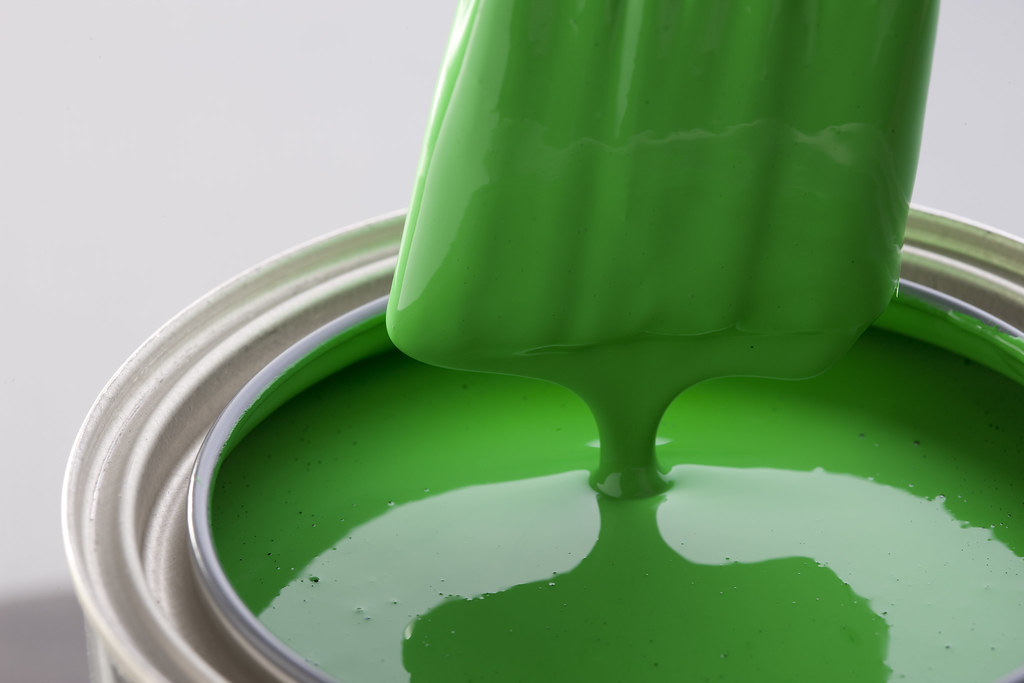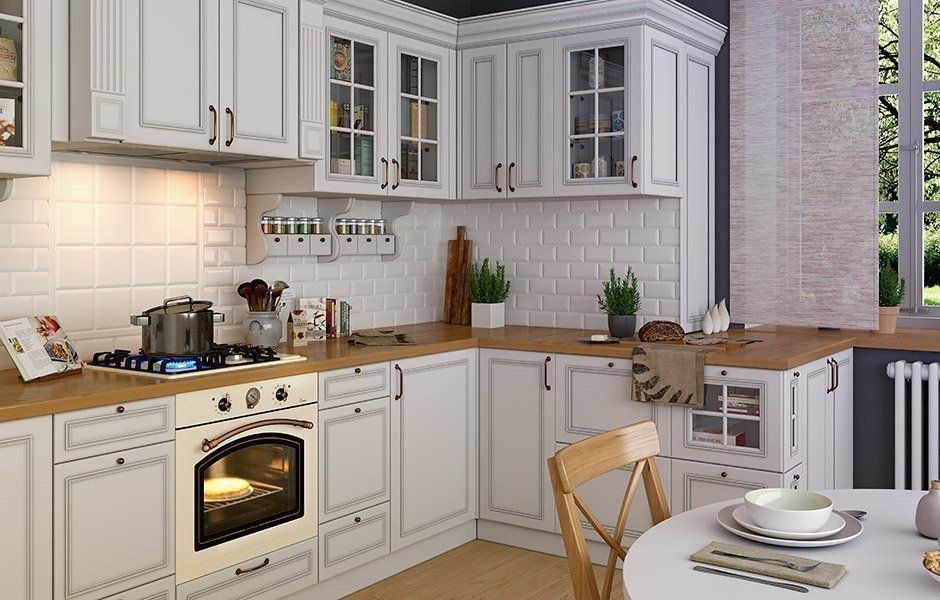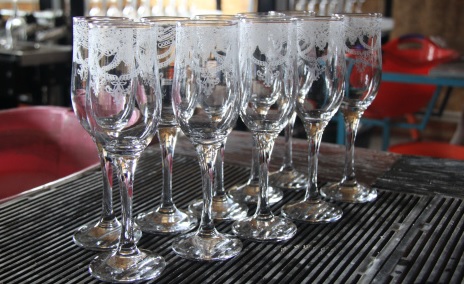Ranking of the best classical guitars for 2024
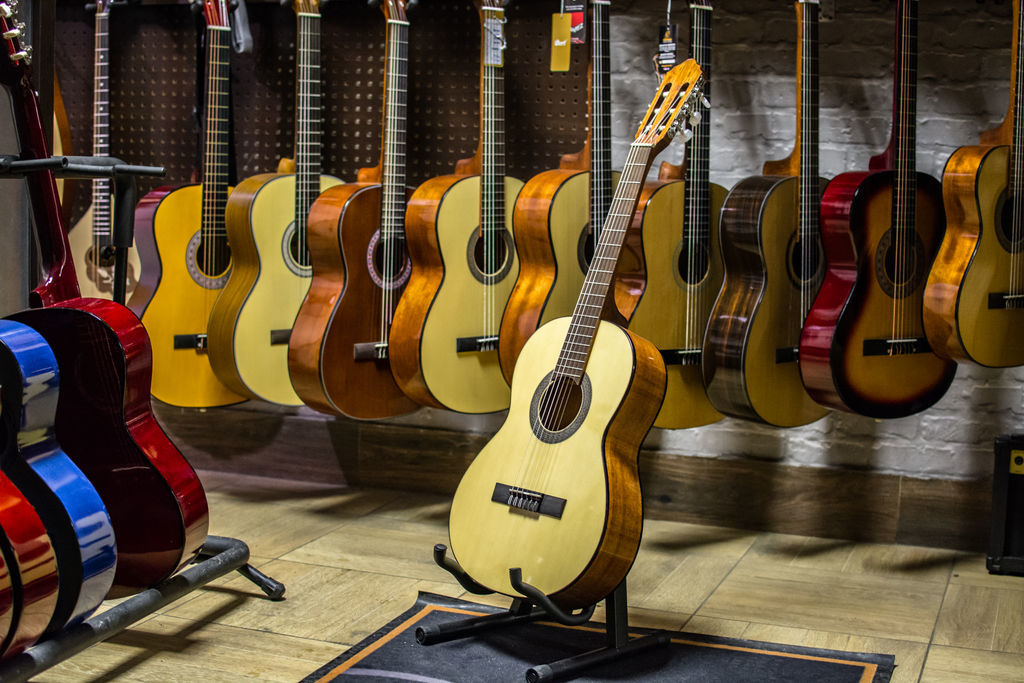
One of the most commonly used musical instruments is the guitar. It is quite easy to learn to play on it, even superficial training will allow you to play some melody. As you continue to master the simple science of playing, a large number of performance techniques, different styles, are revealed that reveal the advantages and new possibilities of playing musical notes.

Which instrument to choose: acoustics or classics
Classical guitar (Spanish, six-string) is a plucked string instrument that is the main representative among classical and acoustic devices. It is used as an accompanist, for solo performance, or in ensemble reproduction of musical melodies. In its traditional form, it began its existence from the end of the 18th century. The instrument is endowed with great advantages, in particular, numerous performance possibilities, as well as an incredible variety of timbre sound. The difference between an ordinary guitar and an acoustic one is nylon strings, wide neck and body configuration.
Of course, a branded item is good, but you need to choose a device according to its characteristics. First you need to decide on the choice of a suitable design:
- Classic devices are the best choice for beginners. The wide and slender necks are great for perfecting fingering. Narrow grip models on acoustics and electric guitars are not very comfortable for the fingers, they will create inconvenience, interfering with both hands and strings. Soft nylon strings used on the classics do not cause pain, do not allow the development of calluses, and are quite easy to pinch and pull with bends. Experts do not advise experimenting and switching to steel, since there is very little strength for pulling the strings, not any classical guitar will withstand high tension.
- Rigid springs (rails - amplifiers) of acoustic guitars located under the top deck, as well as anchors located in the neck, can accommodate steel strings. They enrich the sound and make the sound louder. Dreadnoughts called Western guitars have the same properties. With steel strings, pickups are easy to use, making other models different in availability. The kit contains a built-in preamp, which makes it easier to perform during the performance, as opposed to reducing the sound with a microphone.
What to consider when choosing
Before going to a specialized outlet, you need to familiarize yourself with the main types of traditional devices, namely, with their components and the material from which guitars are made. This will make it much easier to decide on the purchase of a musical device.
Wood used in the manufacture of classic tools
It is no secret to anyone that the composition of wood has a significant effect on the sound quality of a finished musical device. This format is very important, it calculates and establishes class affiliation. Devices for the entry-level, made of inexpensive plywood, in the production of a professional, only solid plates of high-quality wood are used.
Based on such criteria, you can figure out the definition of a guitar class, according to the material from which it is made. There are several types and criteria, namely the class and type of wood, explaining the types of devices.

Dimensions
If the guitarist has taken the correct position, it means that he can easily reach the peg, which is responsible for the operation of the fourth string. This means free and straight holding of the arm, at least not fully extended, but slightly with a bend at the elbow. Fingers slightly bent at the bend: middle, index and ring, can reach the first, thinnest string. If you manage to reach it, but you feel discomfort, and your hand rests on the guitar at the elbow, then the instrument is too large.
Types of classical guitars by material
There are three types of classic devices:
- plywood (shell, plywood deck and bottom);
- combined (plywood bottom, shell, but the deck is made of solid cedar);
- one-piece plates (bottom, deck and shell, consisting entirely of solid wood).
Plywood
Guitars are made entirely of plywood, the classic name is justified only to some extent, since such a device is suitable for teaching and fully meets student's goals. They are intended for the first steps in mastering a musical instrument. There is only a slight external resemblance to the classics, since, first of all, it is a market product with rather low quality and low price.
Combined
The bottom and sides of this type are also plywood, but the deck is made of a solid plate of cedar, spruce or pine. Strikingly different from plywood guitars, because the soundboard changes the sound a lot, imparting a softened tone.
Such samples are distinguished by decent quality, excellent sound and low cost, therefore they are in demand among many musicians. Playing on such a device, you can not only master the rules of the game, but also touch the world of the classics.
Solid wood plates
Professional classical devices, the guitar class depends entirely on the specialist - manufacturer and type of wood (the material that has the highest sound characteristics is valued) and on the procurement process.
At the initial stage, the correct tree is selected. At the end of the selection, the logs are separated, the resulting blanks are removed for long-term storage so that the material can be dried in its natural environment for several years. The processes taking place during the drying show the quality of the wood and the acoustics. After the material is dry enough, it is still kept, which will significantly affect the quality, the longer the aging, the more valuable the workpiece itself.

Rating of the best classical guitars
Alhambra 7.845 Open Pore 1 OP Senorita
Alhambra Open Pore 1 Op Senorita is a classic musical instrument of small size 7/8. This device is suitable for beginners and is part of the Classical Student line. It is made of quality wood, with excellent finish and light weight. The top is made of solid cedar, while the back, sides and neck are made of mahogany.
The wooden areas remain open thanks to the transparent and matt finish, thus increasing resonance and reducing the weight of the product.Its exterior lends elegance to the finishes, including a rosette with a beautiful decor and light edging. Other features include a nickel-plated tuning machine using Indian rosewood for fingerboard, and the position of the springs according to the Classical 3 diagram.
The optimal fret spacing and good height of the strings above the fretboard speaks for the convenience of the guitar for beginners. This in no way affects the power and volume. The saddle (50 mm wide) and saddle made of synthetic melamine material are excellent at transmitting vibration, contributing to a rounded and crisp sound.
- the instrument is aimed at novice musicians;
- excellent material quality;
- open pores and beautiful finish;
- the tuners are nickel-plated.
- not identified.
Phil Pro AS - 3904 BK
Phil Pro AS - 3904 is slightly smaller than traditional dreadnoughts, therefore it is convenient to play on it, as well as to move and transport. The body is made of linden, giving lightness.
The affordable price corresponds to the clarity and balance of the sound with a small percussion tone.
Available in three colors:
- N - natural;
- BK - black classic;
- 3 TS - three-tone sunburst.
Scale - 650 mm.
Phil Pro AS - 3904 is suitable for beginners, as well as for live music lovers at special events or on vacation.
- suitable for beginners;
- affordable price.
- not identified.

Rockdale Modern Classik 100 - BK
The Rockdale Modern Classik 100 - BK is a traditional classic six-string guitar without pickup. Guitars of this company stand out for their excellent sound output and low price. The guitar neck is made from a variety of mahogany (nato) and the fretboards are made from faux ebony. Guitar scale - 650 mm, the deck is finished with a glossy finish, the unit is black.
The top and bottom decks are made of agatis, as are the sides. The instrument will delight beginners with its pleasant overtone and balanced sound throughout the entire range. Some models have an elegant piping on the top.
- pleasant overtone;
- balanced sound for the entire range.
- not detected.
Yamaha C 40
Yamaha C 40 - presented by the Japanese manufacturer as a model belonging to the "C" line, with a full size. It is assembled from high quality materials, produces excellent sound, is comfortable enough to play and is not too expensive. It is an excellent choice for beginners and initial training. Like other models of the company in question, it passed all the necessary tests and quality checks.
Not too loud and pleasant sound gives even more enthusiasm and confidence. The deck on the upper level contains spruce wood, often used in musical structures, with positive acoustic properties. The structure of the CG body contains meranti wood, which bears another name - Filipino mahogany wood with a gloss finish. The neck itself is nato wood with 19 frets without inlay and a flat rosewood fingerboard, just like the guitar bridge. The tool is presented in a natural color with chrome tuners RM - 1252X. The YAMAXA C 40 has nylon strings.
- spruce wood, which has positive acoustic properties;
- high quality materials;
- makes great sound;
- comfortable enough while playing;
- is not too expensive.
- not detected.
Veston C - 45 A BK
A budget model for beginner musicians. A good item for non-professional players looking to get their hands on an inexpensive unit. A classic instrument with nylon strings, pleasant and balanced sound.
Its distinctive feature is the neck, equipped with a truss rod, which adjusts the height of the strings for comfortable music reproduction.
In comparison with other classic Spanish guitars of a professional level, Veston C - 45 is not characterized by high cost, practically does not require special care and unusual conditions of keeping.
- relatively inexpensive;
- not demanding for care and maintenance.
- not identified.
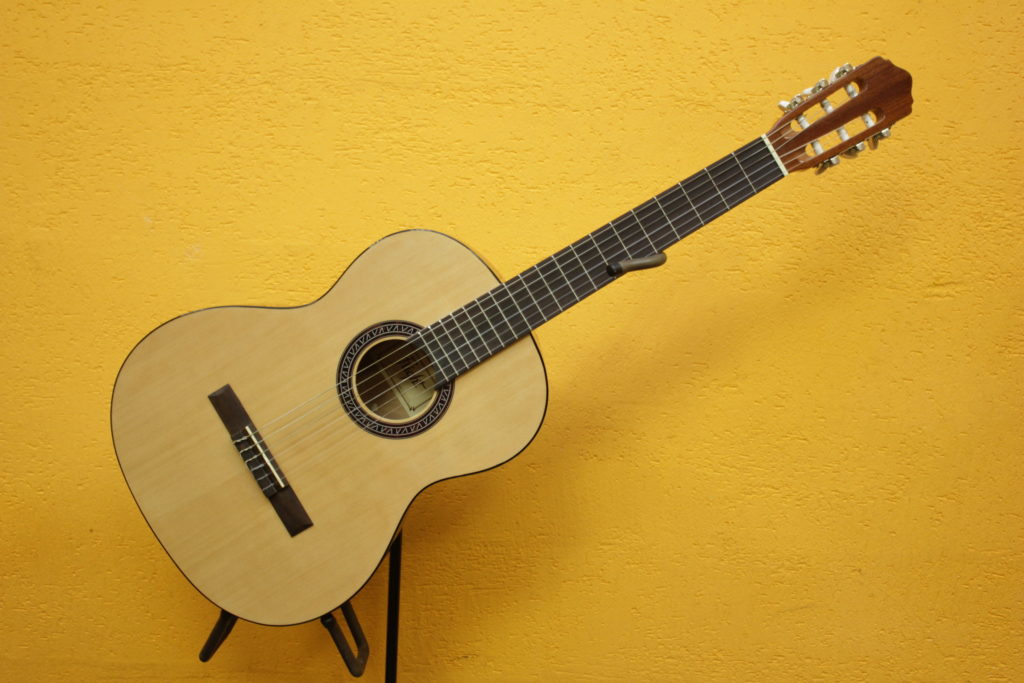
Flight C - 120 NA 4/4
The body shape and nylon strings of a classical guitar are great for music school students and home learning to play the instrument.
Experts recommend choosing nylon strings for the initial gaining experience, delivering the minimum amount of inconvenience during the game. The Flight C - 120 model is a full-size device and is suitable for children and adults who are beginning to learn the art of guitar.
The clear sound of the top soundboard, necessary for competently developing the ear, is ensured by the spruce blank. The sapele shell and back are similar in composition to mahogany, providing softness and depth. 6 mm thick, the fingerboard is made of an unusual material - kabucalli, which creates a pleasant weight and reliability in the hand.
Comfortable playing is made due to the strings height of 4mm. The undoubted reliability of the tuning machine, providing a smooth ride with precision and ease of tuning, and also maintains the tuning.
The original rosette pattern is striking, in perfect harmony with the stand and dark piping on the top and bottom decks. The tool is presented in a natural range with a glossy classic finish.
- unlike cheap options, the bottom deck is not flat, but with a bulge, as on expensive devices, this shape is more correct, affecting the body resonance;
- high-quality varnish coating allows you to cover the instrument in one layer, since the large thickness of the varnish muffles the sound;
- the smooth running of the tuning mechanism does not upset the smoothness, does not allow dust and dirt to get dirty, helps to maintain the tuning;
- The fretboard is made of quality rosewood to prevent chafing on the neck. Thick section helps to comfortably hold the bar, which will behave stably during use;
- Drying thoroughly before assembly allows for colorful sounds and reduces the possibility of deformation in case of improper storage.
- not identified.
Strunal 4671 - 4/4
Combines the highest degree of performance with a bright and clear sound and a decent price. Therefore, if the choice fell on the Strunal 4671 guitar, you can safely buy the proposed model. Selected, seasoned beech, which consists of the neck, spruce top, and bog maple back and sides, simultaneously ensure good acoustics and a long service life. Nickel tuners are combined with nylon strings for tuning, delicate debugging, and reproduction of a wide variety of different repertoires performed on this unit.
- good acoustics;
- long service life.
- not identified.

Cort AC100 - OP Classic Series
A reworked modern model featuring improved resonance and authentic sound. The combined woods give the guitar an amazing and delicate sound. The units of the series "forgive" inaccuracies in performance, "do not require" error-free play.
Nylon strings are coated with an anti-corrosion agent to resist fading and maintain strength and vitality. If the guitar has been out of work for weeks, the strings look fresh.
- the top deck is made of spruce, which has a balance between flexibility and strength. It is great for playing a variety of game genres and styles;
- the bottom deck and sides are mahogany, a material standard on acoustic guitars for a long time;
- the springs are well distributed, the spring system increases the vibration of the nylon strings;
- the fret curl adds extra comfort to the left thumb.
- not identified.
Buying Tips
- The customer should like the appearance. But more important is the material from which the guitar is made. You should not purchase a tool consisting of one plywood, despite its beautiful appearance.
- Be sure to pay attention to the quality of the strings. Better if they are nylon, they are easier to learn to play, only they do not have a rich and spacious sound. The strings and neck should be 3mm apart at the 12th fret. It is necessary to check that the outermost strings do not go beyond the boundaries of the neck plane. Although they can always be replaced and purchased the ones you like.
- It is worth inspecting the tool before buying for uneven surfaces, scratches, chips. Small imperfections can ruin the sound or setup. If you attach the neck to the body with any bolt, you must immediately abandon the device.
- You should try out the guitar by playing some melody. If you hear bumps or rattles, or poor sound quality, you don't need to buy it. Before settling on a device you like, it is better to inspect several models. So you will be able to choose the instrument to your liking.
- It is worth paying close attention to the inspection of the guitar neck. It should have a perfectly flat ebony overlay. You need to shake the strings by clamping them at different frets. There should be no rattling, the frets must be parallel to each other and be even.
Conclusion
Purchasing and choosing the right guitar involves identifying deficiencies in mechanics and evaluating the sonic component. If this is your first time choosing a guitar, you can ask your dealer for help. If there is an opportunity to invite a familiar connoisseur who understands guitars, you should ask him for help.
new entries
Categories
Useful
Popular articles
-

Top rating of the best and inexpensive scooters up to 50 cubic meters in 2024
Views: 97661 -

Rating of the best materials for noise insulation for an apartment in 2024
Views: 95022 -

Rating of cheap analogues of expensive medicines for flu and colds for 2024
Views: 91751 -

The best men's running shoes in 2024
Views: 87681 -

Top ranking of the best smartwatches 2024 - price-quality
Views: 85091 -

Best Complex Vitamins in 2024
Views: 84801 -

The best dye for gray hair - 2024 top ranking
Views: 82406 -

Rating of the best wood paints for interior use in 2024
Views: 77202 -

Ranking of the best action cameras from China in 2024
Views: 75269 -

Rating of the best spinning reels in 2024
Views: 74827 -

The most effective calcium supplements for adults and children in 2024
Views: 72462 -

Top rating of the best means for male potency in 2024 with a description
Views: 68296
